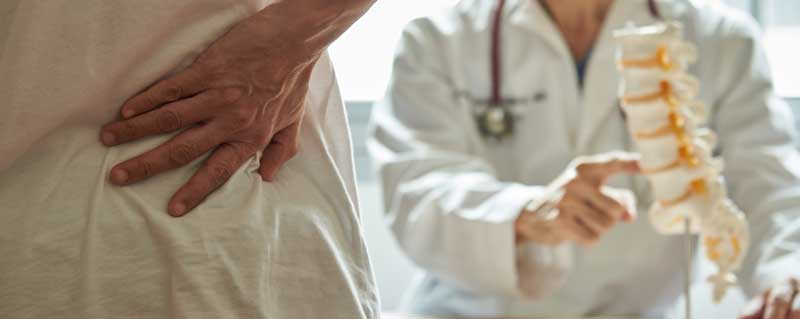Should I Run with Back Pain?
Running is Great Exercise. But What if it Causes Pain?
Running or jogging is a great way to stay healthy, and a great way to get a workout when going to the gym isn’t an option. But what if running hurts your back? Or what if your back hurts when you’re done? Why does this happen? Running puts repetitive stress on your entire body, but notably your back and your joints. For most of us this can mean a couple of days of fatigue and soreness. But for those of us who deal with low back pain issues, either from an injury or a chronic condition, mitigating the strain on our lower backs is critical.
What Causes Back Pain in Runners?
Lower back pain after running is common both in new runners, and in runners returning to the sport after a long break. The pain can range from mild to severe and becomes worse the harder you push yourself. In these cases, running isn’t the direct reason for back pain. But if you suffer from existing spine conditions or muscle imbalances, running can cause stabbing back and aching muscles.
Common Causes of Back Pain from Running
Herniated Disc
The discs in your spine help absorb the shock of running. If a disc weakens due to age, injury, or degeneration, it can lead to pack pain after you run. A herniated disc can also press on nerves, leading to severe pain and sciatica. Depending on the root cause and symptoms of your injury, your doctor may recommend a program of rehab, or a minimally-invasive procedure for pain relief.
Hyperlordosis
Hyperlordosis, or an exaggerated inward curve of the spine, causes your stomach to lean forward and your buttocks to push backward (creating a C-shaped arch in your back). As a simple test, if you were to stand straight against a wall with your feet a couple of inches from the wall, try placing your hands in the arch of your spine. If you find enough space to fit your hands, you have a natural curve. If there’s more than a hand space between the wall and your back, you may have a hyperlordotic curve.This type of curve forces your body to rely on muscles for stability that may not be up to the task, which can worsen the back pain from running. Treating this kind of pain normally involves therapeutic exercise and postural corrections.
Muscle Sprains and Strains
Intense physical activity, like running, can cause ligaments, tendons and muscles in your lower back to tear or stretch too much, resulting in stiffness, pain and muscle spasms. When you have a torn, twisted or overstretched ligament, you have a sprain. On the other
Should I Run with Lower Back Pain?
Everybody responds differently to running for exercise. Although it’s easy enough to go outside and run, and running has numerous overall health benefits, its high-impact nature can make it difficult or problematic for some people. Variances in weight, stride, coordination, and posture make it impossible to say whether running is good or bad for back pain overall.
For those of us who find running to be painful or uncomfortable, even walking briskly has significant benefits for spine health over abstaining from exercise altogether. Keeping a healthy level of movement, even at a walking pace, can improve disc health and lubrication levels in your spine. Talk to a doctor before beginning an exercise program if you suffer from back pain.

Treating Pain from Running
The ultimate goal behind treating back pain from running is to correct weaknesses, imbalances, and physiological irregularities that contributed to the pain. The treatment goals are to reduce or prevent disc or spinal nerve stress, relieve pain and maintain normal function.
Depending on your level of pain your doctor may recommend conservative treatments, such as stretches and exercise, chiropractic adjustment, or over-the-counter medications. If your pain is severe enough to keep you from normal activity, your doctor may recommend a minimally-invasive pain management therapy to relieve your debilitating pain



